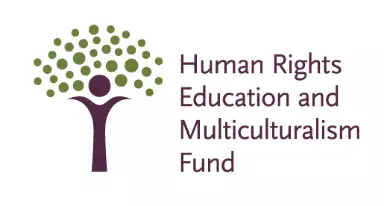
Donate to the Linda McKay-Panos Scholarship Fund

Donate to the Linda McKay-Panos Scholarship Fund
s. 2 Everyone has the following fundamental freedoms:
(b) freedom of thought, belief, opinion and expression, including freedom of the press and other media of communication; Section 2(b) is a broadly protected right in Canada. It protects any activity that conveys, or attempts to convey, a meaning. This covers a very wide scope, including (for example) speaking, writing, artwork, dancing, clothing choices and tattoos. It includes all forms of expression so long as they do not include violence or threats of violence (The Attorney General of Quebec v Irwin Toy Ltd., [1989] 1 SCR 927). We protect free expression for three major reasons: free expression seeks to uphold the truth, encourages political and social participation, and promotes self-fulfillment (The Attorney General of Quebec v Irwin Toy Ltd., [1989] 1 SCR 927).
Three questions are asked to determine if your freedom of expression has been violated:
The Charter protection of free expression is very broad. Any activity is “expressive” if it attempts to convey meaning (R v Keegstra, [1990] 2 SCR 697). As outlined above, this would include talking, singing, clothing choices, signs on one’s property, artwork, or gestures.
Even if an activity has “expressive content”, s. 2(b) protection may be denied in the method or location of expression removes it from s. 2(b)’s scope. Method: Violence, and threats of violence, are not protected by s. 2(b) (Greater Vancouver Transportation Authority v Canadian Federation of Students – British Columbia Component, 2009 SCC 31 at para 28). Location: Not all public places are protected by section 2(b). It protects locations where freedom of expression would be expected, and which does not conflict with the purposes of section 2(b) (democratic discourse, truth-finding, and self-fulfilment). To determine if free expression would be expected in a place, you have to consider two questions(Montreal (City) v 2952-1366 Quebec Inc, [2005] 3 SCR 141 at para 74; Greater Vancouver Transportation Authority v Canadian Federation of Students – British Columbia Component, 2009 SCC 31 at para 39):
Government action will infringe s. 2(b) if it has the purpose or effect of restricting expression. Purpose: If the purpose of the government action or legislation is to limit expression, it will violate s. 2(b). For example, a law that forbids wearing the colour red in public parks has a restrictive purpose. Sometimes it is difficult to determine if a law’s purpose seeks to control expression, or if it is merely aimed at the physical consequences of the expression. If a law is purely aimed at the physical consequences of an activity, its purpose does not run afoul of s. 2(b). This can be a confusing concept that is best explained by way of example: A law that prohibits distributing pamphlets restricts expression, because it seeks to control a person’s ability to communicate a message. On the other hand, a law that prohibits littering may adversely impact the distribution of pamphlets, but its purpose is aimed at consequences (littering), not the expression itself (Irwin Toy Ltd. v. Quebec (Attorney general), [1989] 1 SCR 927 at 974-975). Effect: Even if the purpose of government action or legislation is aimed at something other than expression, it may still run afoul s. 2(b) if the effect impacts your freedom of expression. If challenging an effect-based action or legislation, you must be able to prove that your activity or expression fits within one of the core values protected by freedom of expression: truth, democracy, or self-fulfillment (Retail, Wholesale and Department Store Union, Local 558 v Pepsi-Cola Canada Beverages (West) Ltd., [2002] 1 SCR 156 at 32). The less a form of expression fits within these core values, the less likely a court is going to find that your right to expression was violated.
Many laws or government actions that infringe s. 2(b) are nonetheless upheld. The government can, and often does, justify its restrictions on expression as reasonable and justifiable limits. While s. 1 justifications are discussed in more detail here, some of the well known government restrictions on expression are discussed below.
Hate speech can frustrate the values protected by s. 2(b). It is an attempt to marginalize individuals based on their membership in a particular group, which can lead to serious attacks on vulnerable groups. Laws prohibiting hate speech have been upheld as reasonable limits on freedom of expression. For example, see Saskatchewan (Human Rights Commission) v. Whatcott, 2013 SCC 11; R v Keegstra, [1990] 2 SCR 697).
The Criminal Code also limits freedom of expression. It has a number of provisions curtailing expressions or conduct that provoke hatred towards a person or a group, including the: promotion of genocide (s. 318); public incitement of hatred against an identifiable group (s. 319(1)); wilful promotion of hatred (s. 319(2)); Ÿ mischief against a religious property (s. 430.4.1); and offences that are motivated by hate (s. 718.2(a)(i)). Some of these laws have been challenged as breaching freedom of expression. Where challenged, the Courts have agreed that a s. 2(b) violation occurred, but upheld the laws as reasonable and justifiable limits under s. 1. For example, see R v Keegstra, [1990] 2 SCR 697.
The Criminal Code has various provisions that prohibit obscene material, that often arises in the case of pornography or other sexually explicit material. Material is “obscene” if the exploitation of sex is its dominant characteristic, and that exploitation is undue. Undue exploitation is determined by examining whether Canadians, as a whole, would not tolerate other Canadians being exposed to it because of the degree of harm resulting from such exposure (the “community standards test”). Obscenity laws violate s. 2(b) of the Charter, but are nonetheless upheld as a reasonable limit on free expression (for example, see R v Butler, [1992] 1 SCR 452). Greater protection may be afforded to sexually explicit materials which has a broader artistic or literary purpose back
s. 2 Everyone has the following fundamental freedoms:
(b) freedom of thought, belief, opinion and expression, including freedom of the press and other media of communication;
Section 2(b) is a broadly protected right in Canada. It protects any activity that conveys, or attempts to convey, a meaning. This covers a very wide scope, including (for example) speaking, writing, artwork, dancing, clothing choices and tattoos. It includes all forms of expression so long as they do not include violence or threats of violence (The Attorney General of Quebec v Irwin Toy Ltd., [1989] 1 SCR 927). We protect free expression for three major reasons: free expression seeks to uphold the truth, encourages political and social participation, and promotes self-fulfillment (The Attorney General of Quebec v Irwin Toy Ltd., [1989] 1 SCR 927).
Three questions are asked to determine if your freedom of expression has been violated:
The Charter protection of free expression is very broad. Any activity is “expressive” if it attempts to convey meaning (R v Keegstra, [1990] 2 SCR 697). As outlined above, this would include talking, singing, clothing choices, signs on one’s property, artwork, or gestures.
Even if an activity has “expressive content”, s. 2(b) protection may be denied in the method or location of expression removes it from s. 2(b)’s scope. Method: Violence, and threats of violence, are not protected by s. 2(b) (Greater Vancouver Transportation Authority v Canadian Federation of Students – British Columbia Component, 2009 SCC 31 at para 28). Location: Not all public places are protected by section 2(b). It protects locations where freedom of expression would be expected, and which does not conflict with the purposes of section 2(b) (democratic discourse, truth-finding, and self-fulfilment). To determine if free expression would be expected in a place, you have to consider two questions(Montreal (City) v 2952-1366 Quebec Inc, [2005] 3 SCR 141 at para 74; Greater Vancouver Transportation Authority v Canadian Federation of Students – British Columbia Component, 2009 SCC 31 at para 39):
Government action will infringe s. 2(b) if it has the purpose or effect of restricting expression. Purpose: If the purpose of the government action or legislation is to limit expression, it will violate s. 2(b). For example, a law that forbids wearing the colour red in public parks has a restrictive purpose. Sometimes it is difficult to determine if a law’s purpose seeks to control expression, or if it is merely aimed at the physical consequences of the expression. If a law is purely aimed at the physical consequences of an activity, its purpose does not run afoul of s. 2(b). This can be a confusing concept that is best explained by way of example: A law that prohibits distributing pamphlets restricts expression, because it seeks to control a person’s ability to communicate a message. On the other hand, a law that prohibits littering may adversely impact the distribution of pamphlets, but its purpose is aimed at consequences (littering), not the expression itself (Irwin Toy Ltd. v. Quebec (Attorney general), [1989] 1 SCR 927 at 974-975). Effect: Even if the purpose of government action or legislation is aimed at something other than expression, it may still run afoul s. 2(b) if the effect impacts your freedom of expression. If challenging an effect-based action or legislation, you must be able to prove that your activity or expression fits within one of the core values protected by freedom of expression: truth, democracy, or self-fulfillment (Retail, Wholesale and Department Store Union, Local 558 v Pepsi-Cola Canada Beverages (West) Ltd., [2002] 1 SCR 156 at 32). The less a form of expression fits within these core values, the less likely a court is going to find that your right to expression was violated.
Many laws or government actions that infringe s. 2(b) are nonetheless upheld. The government can, and often does, justify its restrictions on expression as reasonable and justifiable limits. While s. 1 justifications are discussed in more detail here, some of the well known government restrictions on expression are discussed below.
Hate speech can frustrate the values protected by s. 2(b). It is an attempt to marginalize individuals based on their membership in a particular group, which can lead to serious attacks on vulnerable groups. Laws prohibiting hate speech have been upheld as reasonable limits on freedom of expression. For example, see Saskatchewan (Human Rights Commission) v. Whatcott, 2013 SCC 11; R v Keegstra, [1990] 2 SCR 697).
The Criminal Code also limits freedom of expression. It has a number of provisions curtailing expressions or conduct that provoke hatred towards a person or a group, including the: promotion of genocide (s. 318); public incitement of hatred against an identifiable group (s. 319(1)); wilful promotion of hatred (s. 319(2)); Ÿ mischief against a religious property (s. 430.4.1); and offences that are motivated by hate (s. 718.2(a)(i)). Some of these laws have been challenged as breaching freedom of expression. Where challenged, the Courts have agreed that a s. 2(b) violation occurred, but upheld the laws as reasonable and justifiable limits under s. 1. For example, see R v Keegstra, [1990] 2 SCR 697.
The Criminal Code has various provisions that prohibit obscene material, that often arises in the case of pornography or other sexually explicit material. Material is “obscene” if the exploitation of sex is its dominant characteristic, and that exploitation is undue. Undue exploitation is determined by examining whether Canadians, as a whole, would not tolerate other Canadians being exposed to it because of the degree of harm resulting from such exposure (the “community standards test”). Obscenity laws violate s. 2(b) of the Charter, but are nonetheless upheld as a reasonable limit on free expression (for example, see R v Butler, [1992] 1 SCR 452). Greater protection may be afforded to sexually explicit materials which has a broader artistic or literary purpose back




2500 University Drive NW
Calgary, AB T2N 1N4
(403) 220-2505
aclrc@ucalgary.ca